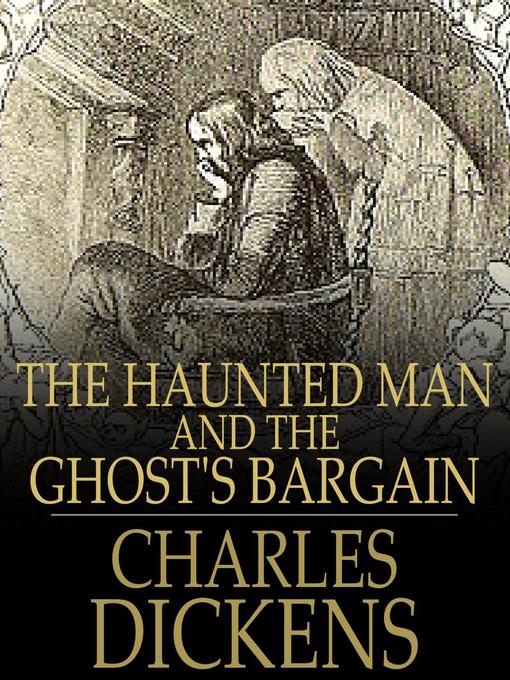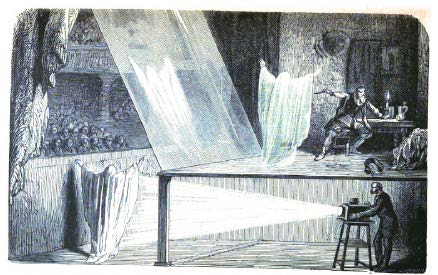
Charles Dickens' novella, The Haunted Man and The Ghost's Bargain presents an enigma in that it has not been adapted so much as once as a screen or even a known stage production since the nineteenth century. That's right---Dickens' ghostly tale of a gloomy chemistry teacher named Redlaw, haunted by wrongs done to him in the past, who encounters his ghostly double on Christmas eve has yet even to be filmed. Contrast that with the story of Scrooge, with more adaptations on screen and stage (not to mention parodies, animated, and sticom version, etc) than any other Dickens work bar none. Mention the name "Scrooge", and anyone will know the character. It would be very difficult ot find someone familiar with Redlaw's tale.
The species of phantom Redlaw encounters, a duplicate of himself, is known to folklore as a "fetch". The phantom doppleganger is staple in paranormal literature. One also features in Edgar Allen Poe's short story "William Wilson."
Dickens' Haunted Man was the last of his Christmas stories, which he began publishing annually following A Christmas Carol's roaring success, the previous ones being The Chimes, The Cricket on the Hearth, adn the Battle For Life. Of these, only The Chimes was another ghost story, about phantoms that haunt the bell tower, though it took place on New Year's Eve rather than Christmas. The protagonist of The Haunted Man, which, like Carol, occurs on Christmas proper, is so morbid about past wrongs (I think there's many who can relate to him), that he accepts the phantom's offer to obliberate all his unpleasant memories. The phantom's "gift," has unforseen consequences, as Redlaw becomes unable to express a loving nature--be becomes merely bitter and quarrelsome. Worse, his affliction spreads to others around him. The loving Swidger family and Tetterby family become...not so nice. It is only an innocent child character, Milly Swidger, who, because she remains uneffected by the affliction, is able to save Redlaw. the chemist recounts his bargain with the ghost, and all is restored to right and good by the end. The message hear, delivered in the final line by Milly Swidger, is that even painful memories of our past must be preserved in order for love and joy to exist in the present. That message, and the story itself, did not manage to resonate nearly as deeply with the collective human psyche as A Christmas Carol did. Still, the story seems to have been fairly popular on the stage following its publication. The story also includes a heavy dose of social criticsim of the times, just as in Carol and Chimes: at one point Redlaw encounters a half-wild "beast child," a sort of equivelent of Carol's Ignorance and Want.

The reasons for its utter disapearance following the Victorian era remain unclear. Fred Guida, in his book A Christmas Carol and its Adaptations, relates that records show that one of the early stage adaptations featured a "flying ghost" onstage, and a later one was the first presentation of the "Pepper's Ghost" effect, very innovative for the time, in which the ghostly image of a human actor was projected onto the stage via a light projector, and through a pane of glass situated between the stage and audience. The effect was pioneered by polytechnic Henry Dirks, and presented on the stage by another polytechnic, John Henry Pepper, hence the name.

Whatever the reason, dispite its early popularity, it's obvious by now that the story of Scrooge managed to totally eclipse that of Redlaw. I think it's time The Haunted Man was given its due on screen. Come to think of it George C. Scott might well have made a formidable Redlaw just as he did Scrooge. Scott was very good at depicting complex, conflicted characters in his movies. It's a pity he's no loger with us.
Here is an illustration of the fetch from the story:

And some interesting illustrations for The Chimes:


No comments:
Post a Comment